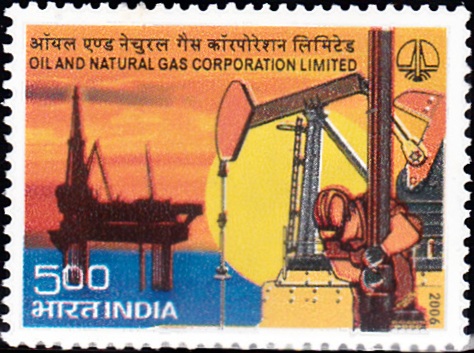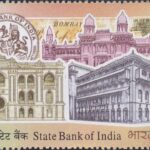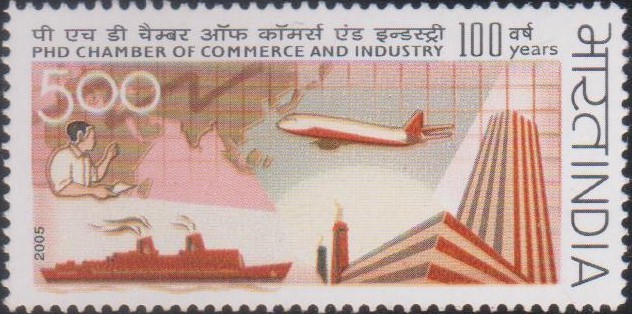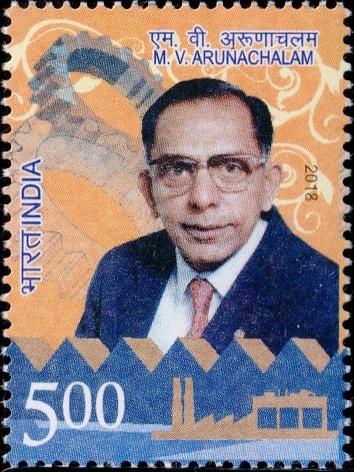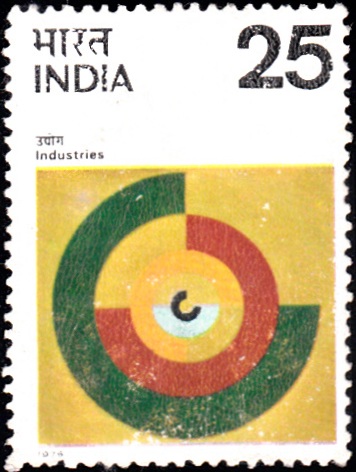
India on Industries 1976
A commemorative postage stamp on the Indian Industries :
Issued on Apr 30, 1976
Issued for : The Posts & Telegraphs Department feels proud to bring out a special postage stamp on Indian Industries.
Description of Design : The design of the stamp prepared by Shri Benoy Sarkar is a stylised one on the theme of ‘Industries’.
Type : Stamp, Postal Used
Colour : Multicolour
Denomination : 25 Paise
Overall size : 3.91 X 2.90 cms.
Printing size : 3.56 X 2.54 cms.
Perforation : 13 x 13
Watermark : Printed on unwatermarked adhesive stamp paper
Number printed : 30,00,000
Number per issue sheet : 35
Printing process : Photogravure
Printed at : India Security Press
About :
- Industrial development on an organised basis started in India more than half a century back. The major industries consisted of cotton textiles, jute, cement, sugar, paper, iron and steel and glass. Cotton textiles was the most important industry and in 1950 contributed more than one-third to the total industrial development in the organised sector. Today, its share has come down to 11 per cent with the growth of other industries, both in the public and private sectors.
- The process of industrial development received a new impetus after Independence. The index of industrial production rose from 100 in 1951 to 356 in 1975. This development was brought about not so much by the multiplication of traditional industries as by the establishment of new industries. Industrial production got diversified and a number of industries involving both large capital and advanced technical skills came into being. India is among the first ten largest industrialised countries in the world.
- Since the major objective of industrialisation is to make economic development self-reliant, considerable accent is placed on the production of equipment and machinery. Parallel progress has also taken place in design engineering and know-how. Machinery, both mechanical and electrical, now constitutes a substantial part of industrial output. Simultaneously, industries producing transport equipment, electronics, light engineering, chemicals and a variety of consumer goods, have come into being.
- The development of industry has made it possible for India to absorb foreign technology and, what is more, evolve a technology of its own. As a result, Indian industry has been able to set up joint ventures in more than 22 countries.
- The total number of registered factories in 1976 (employing 50 or more workers with the aid of power or 100 or more workers without the aid of power) would be over 16,500. The productive capital is about Rs. 18,000 crores and provides employment to over 5.1 million workers. The ex-factory value of output exceeds Rs. 24,000 crores.
- The Fifth Five Year Plan sets out an ambitious programme for industrial development. On an average, it is estimated that industrial production would go up by 8.5 per cent annually.
Subscribe
Login
0 Comments




